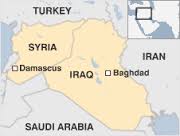(V&R) In the early 21st century, violent extremism in general and Islamist violence in particular have been dominated by several jihadist movements that are regionally-based, primarily operate at regional level and have been undergoing the bottom-up regionalization process. All these movements are major combatants in the world!s most intense regional armed conflicts and the lead terrorist actors against non-combatants. All try to build Islamic states in their regions. They are distinct from both peripheral Islamist/separatist insurgencies fought at subnational level and from al-Qaeda as an inherently extraterritorial movement and ideology, with a fully globalized agenda. Against this background, Daesh, or the “Islamic State”, did not emerge as a global phenomenon, but as a regional movement in the Iraq-Syria context, driven by bottom-up regional dynamics and conflicts facilitated by collapse or weakness of states of the region, fueled by sectarianism and catalyzed by external interventions. The key question is: what turned this regional actor into the new cutting edge of “global jihad” as a movement and ideology? The article identifies three main trends in the evolution of transnational violent Islamism: bottom-up “regionalization”, network fragmentation of the “global jihad” movement and the intensification of targeted intra- and cross-regional jihadist “migration flows”. While interrelated, these trends are distinct, develop in parallel to one another, and only partially overlap. It is precisely where they overlap that the Daesh phenomenon has formed. […]
Read More (PDF) | Contents © Interdisciplinary Journal for Religion and Transformation in Contemporary Society, Vandenhoeck & Ruprecht GmbH & Co. KG











